

Ben Zachariah
CarExpert's top five ute reviews of 2025
2 Days Ago
The recently upgraded Nissan Navara dual-cab range gets a new range-topping PRO-4X style-leader. Let's check it out.
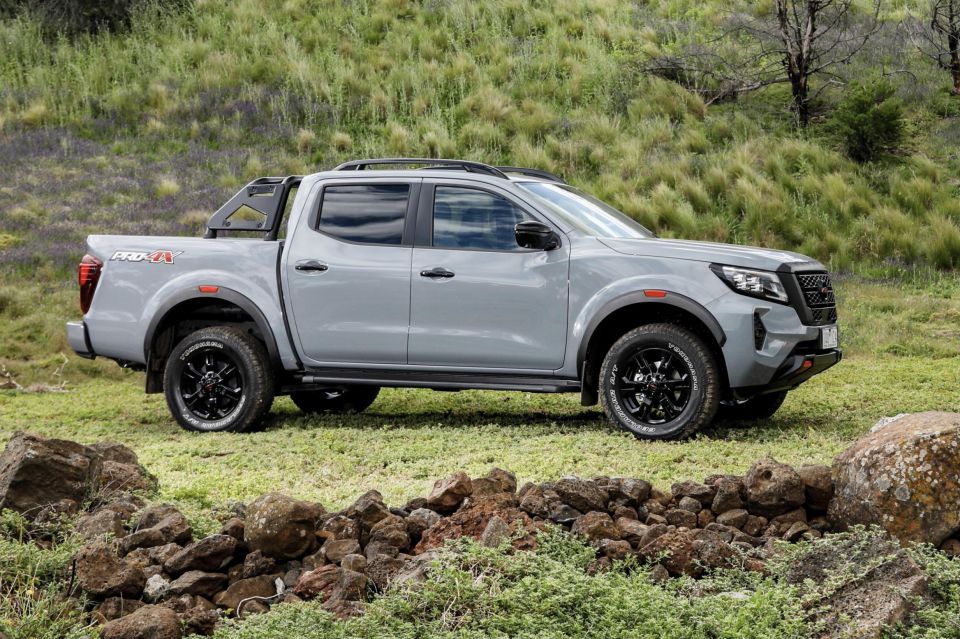
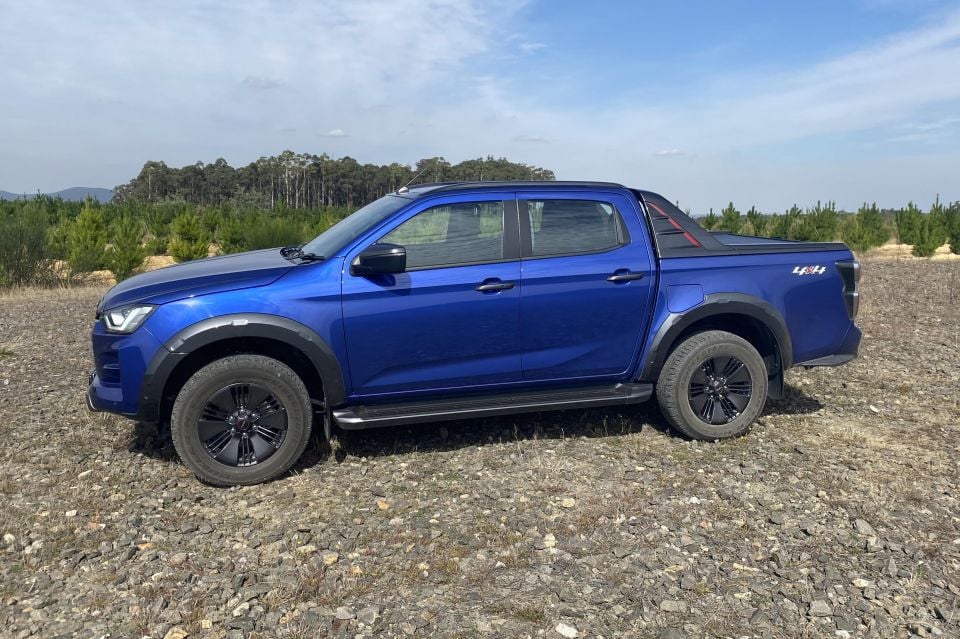

Senior Contributor
New from
$32,300
excl. on-roads

Senior Contributor
New from
$32,300
excl. on-roads


Senior Contributor
New from
$32,300
excl. on-roads

Senior Contributor
New from
$32,300
excl. on-roads
Quickly see how this car stacks up against its competition. Select any benchmark to see more details.
Where expert car reviews meet expert car buying – CarExpert gives you trusted advice, personalised service and real savings on your next new car.
This 2021 Nissan Navara PRO-4X is the style leader of Nissan’s updated 2021 ute range, aimed at other tough-looking utes like the Ford Ranger Wildtrak and Isuzu D-Max X-Terrain.
The formula is simple. Take the existing Navara ST-X range-topper and fit some tough-looking body add-ons, specific leather seats, new wheels, and all-terrain tyres.
In exchange slap an extra $2360 onto the sticker price, and there you have a new flagship variant. Until, of course, the properly 4×4-modified gen-two Navara Warrior that’ll again be engineered by Melbourne’s Premcar arrives.
I have to say, if the aim of the game with the PRO-4X was to make a ute that turns heads, then it definitely succeeds. Especially in exclusive Stealth Grey paint as tested.
And let’s be honest, the Navara has rarely been the ‘coolest’ choice, so that’s noteworthy.
The Navara PRO-4X wears a manufacturer recommended retail price of $58,130 for the manual or $60,630 for the automatic. Both of these prices are before state taxes and dealer charges.
More relevantly, Nissan Australia offers national drive-away prices which at the time of writing were $61,290 on the road for the manual and $62,790 for the auto – the latter of which is tested here.
So, at $62,790 as tested plus another $650 for the paint, how does this stack up?

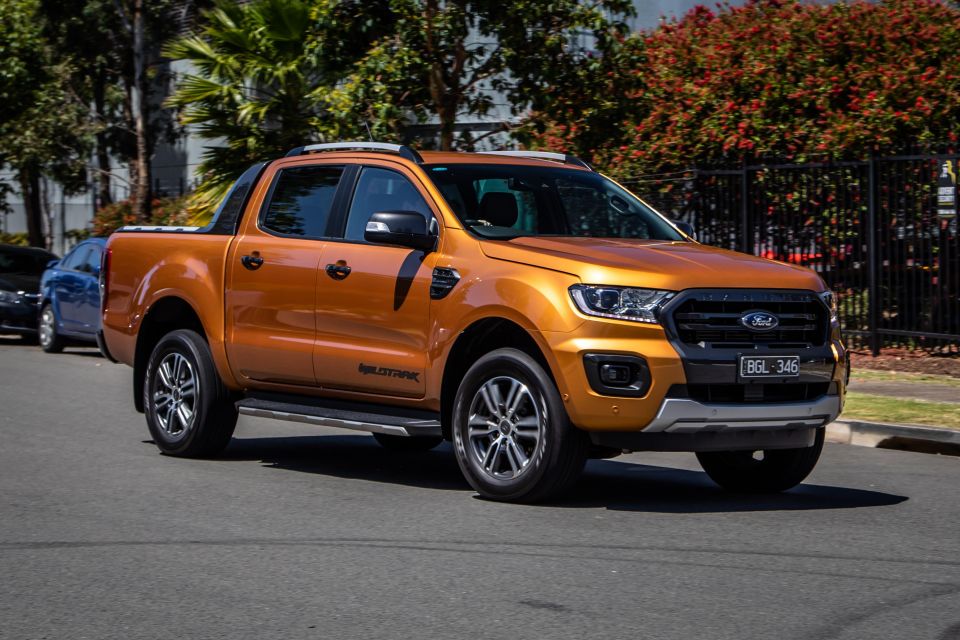
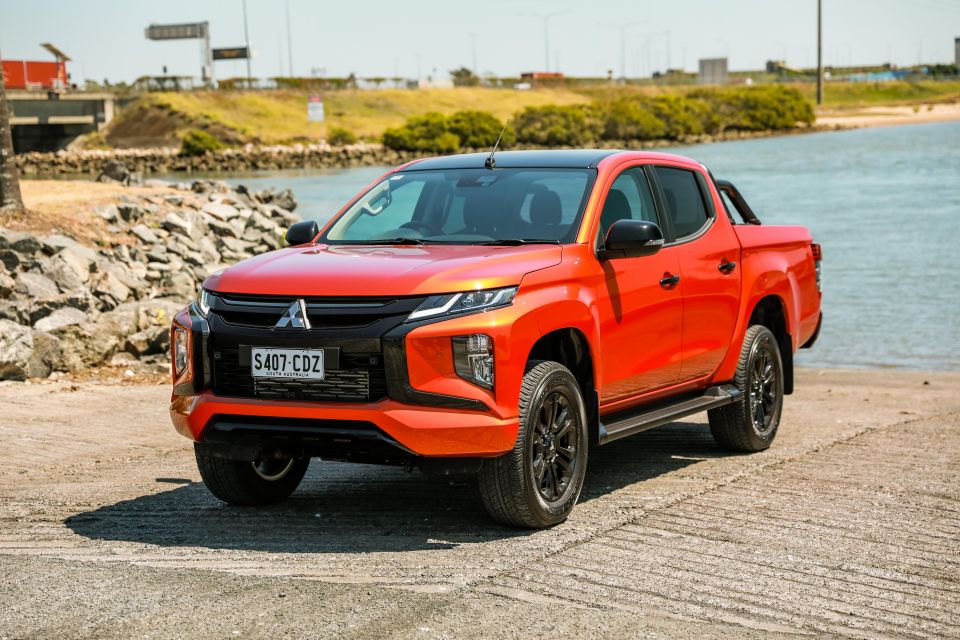
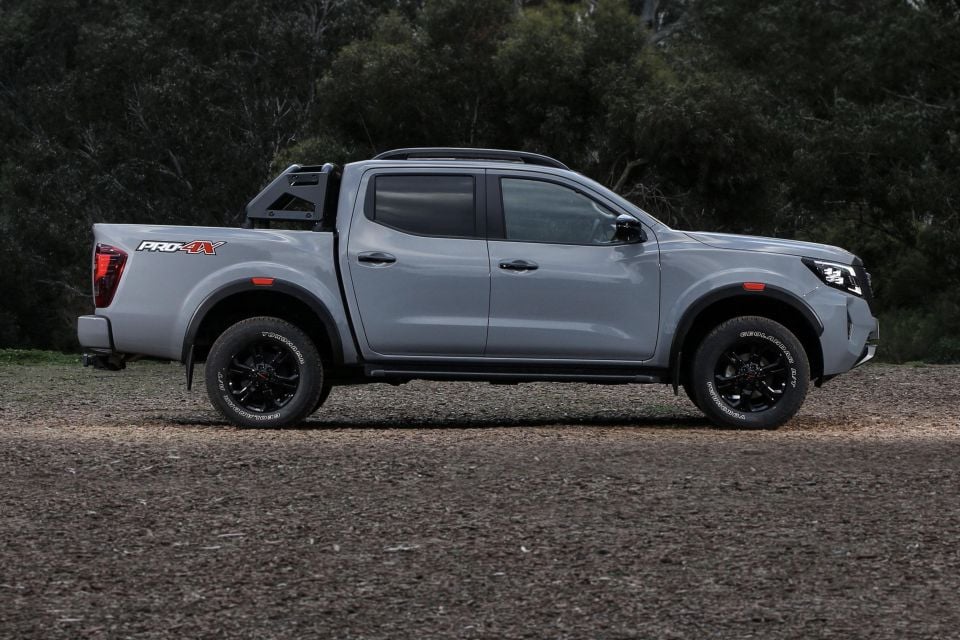
Well it’s cheaper than the two top-sellers. The Toyota HiLux SR5 auto with the premium leather interior option costs the best part of $67,000 drive-away based on the company’s own website, while a Ford Ranger Wildtrak auto’s drive-away price on Ford’s website was $68,700 at the time of writing.
On the other hand, the flagship Isuzu D-Max X-Terrain remains $59,990 drive-away despite its newer design, a Mitsubishi Triton GSR with roll top hard tonneau retails for $57,440 drive-away, and a Volkswagen Amarok V6 Highline is currently going for $62,712 drive-away.
Of course you could haggle a deal, or take advantage of business-friendly ABN prices and asset write-off policies too.
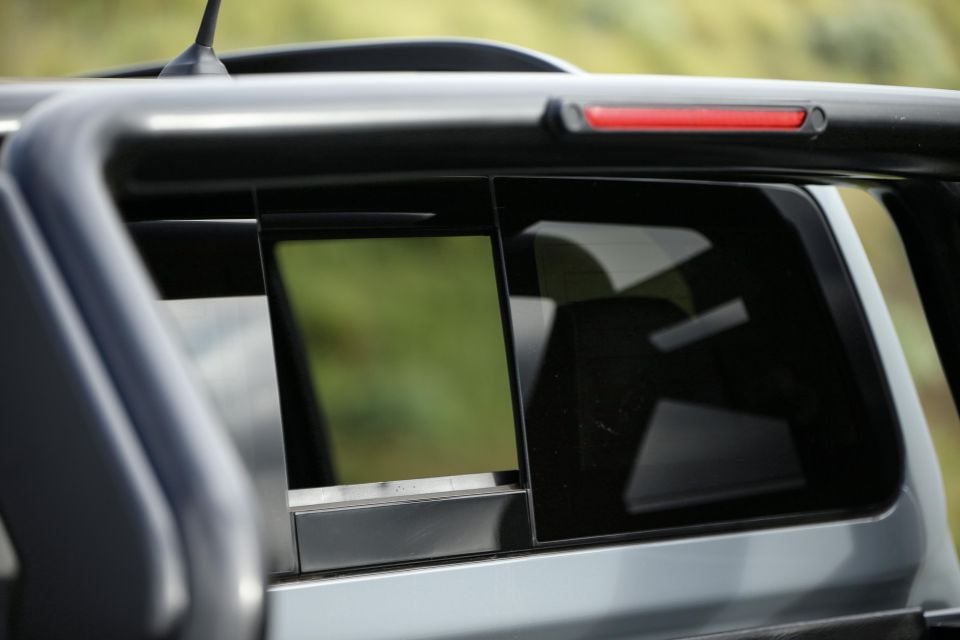
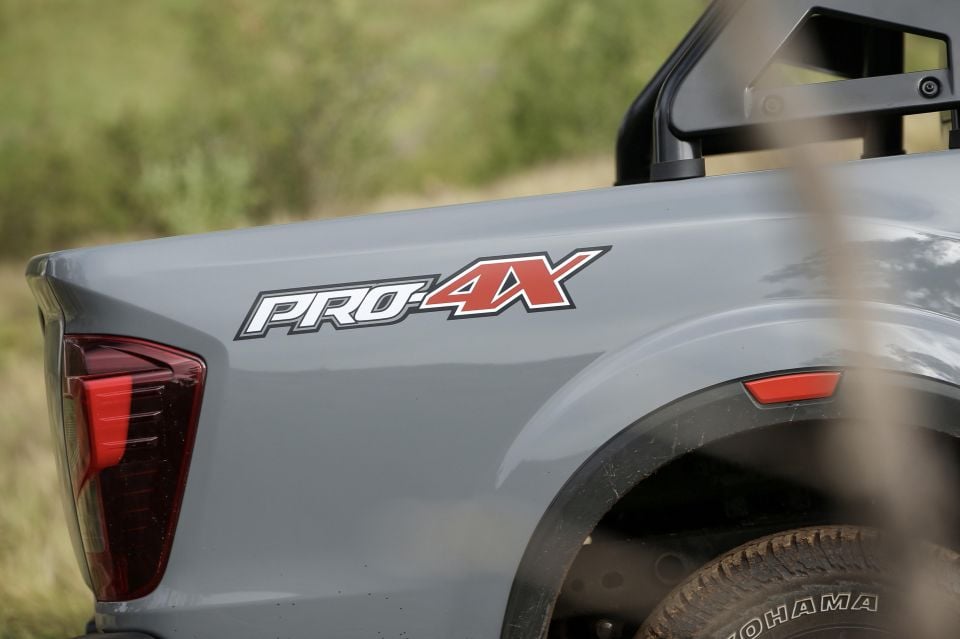
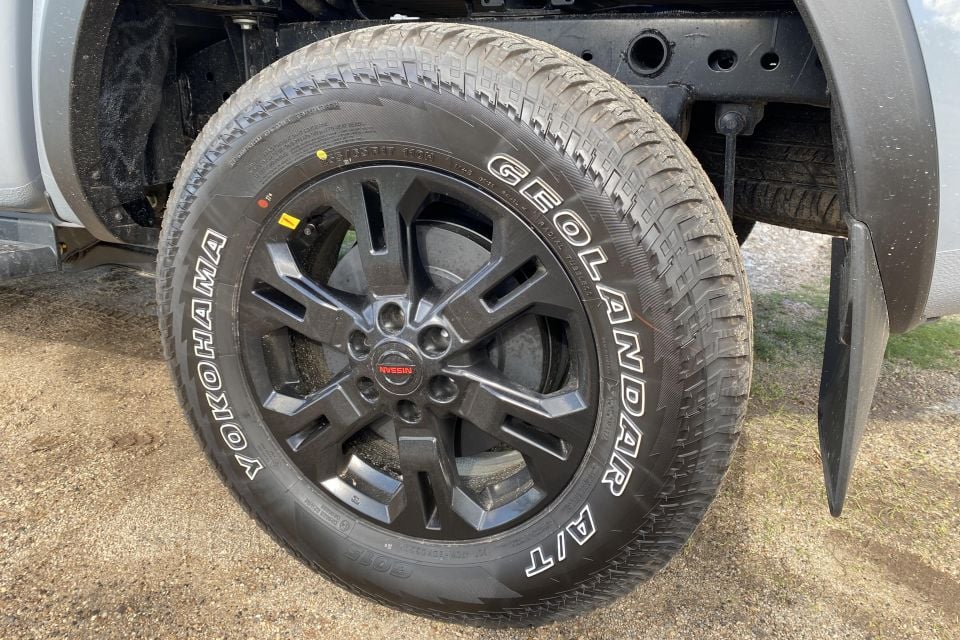

Buy your new car without the stress. It's fast, simple and completely free.

Great service from Travis and team, second time I have used this business would not hesitate to recommend them to anyone
Craig C.
Purchased a Ford Ranger in Sunshine Coast, QLD
CarExpert helped Craig save thousands on his Ford Ranger, now let us save you on your next new car.
Find a dealOn the outside the ST-X’s Toyo Open Country 255/60 R18 road tyres are swapped for 255/65 R17 Yokohama Geolander all-terrains, and the wheels are swapped from 18-inch silver alloys to 17-inch black alloys. The spare is a full-size tyre with a steel wheel.
There’s a black double-tube stainless steel sports bar with sail panel, which is bolted onto the sides of the tub, matching the black used on the door handles, mirror caps, fender flares, and front (plastic) bumper inlay. Note also the use of black and red highlights and the stickers on the tub’s side.
The PRO-4X doesn’t get any extra protection like thicker front steel bash plates or rescue rings beyond the ST-X’s below-radiator steel protector, which clearly leaves room for the PRO-4X Warrior range-topper to carve out its own slice of the modified 4×4 market.

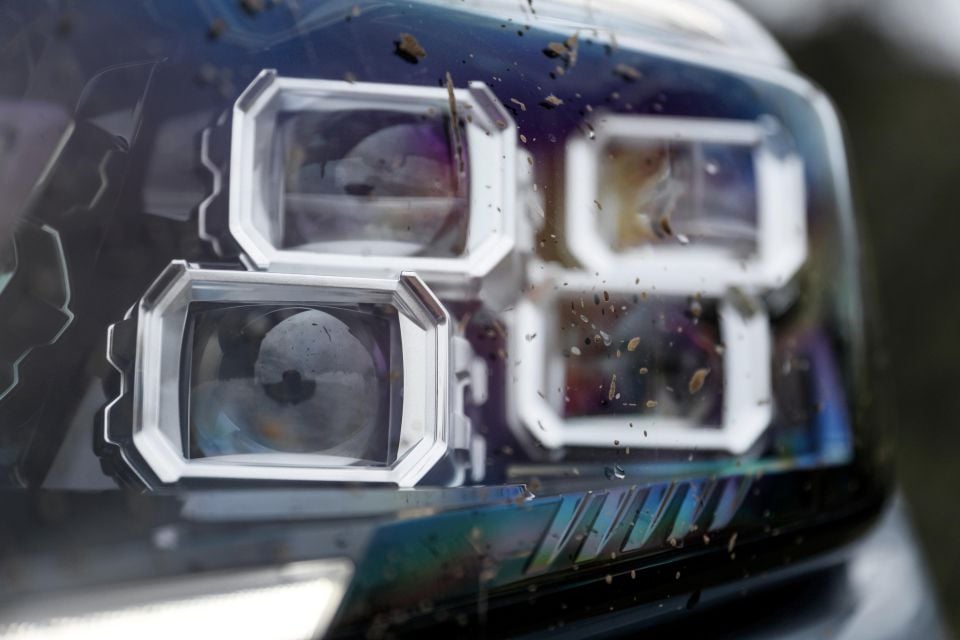

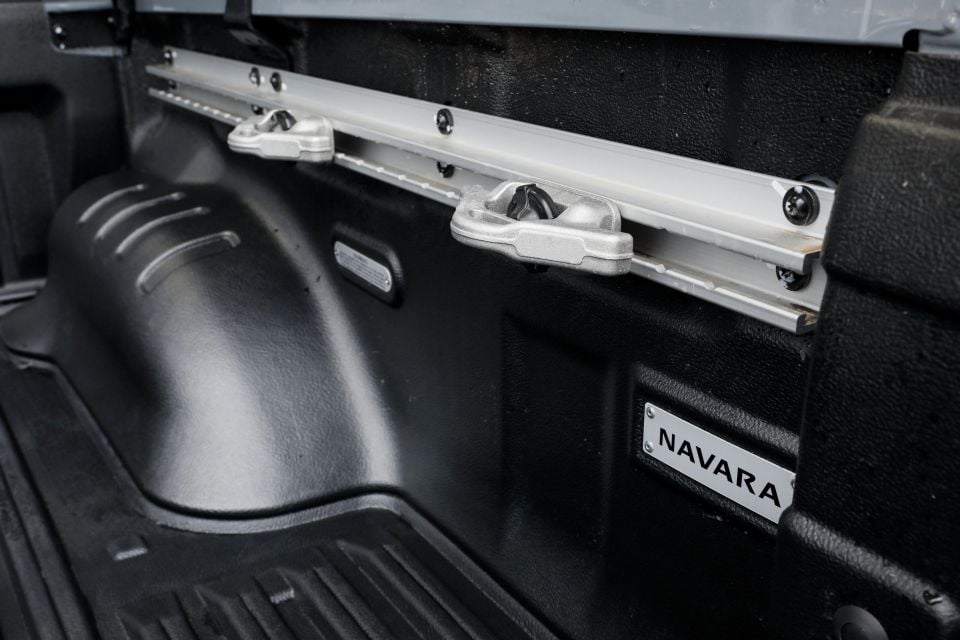
There are also:
The tub comes with a genuine accessory plastic bed liner, Nissan’s Utili-Track system of rails in the side of the bed with movable tie-down hard points, and a new assisted counterbalanced tailgate with branded metal stamping.
The standard paint is Black Star but you can option Burning Red, White Pearl, or Stealth Grey as seen here.
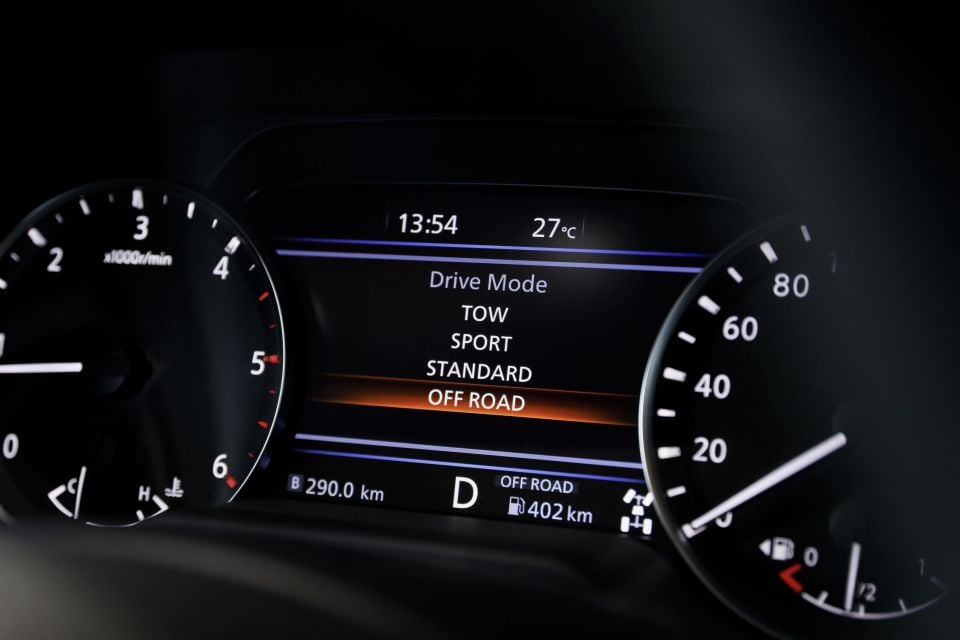

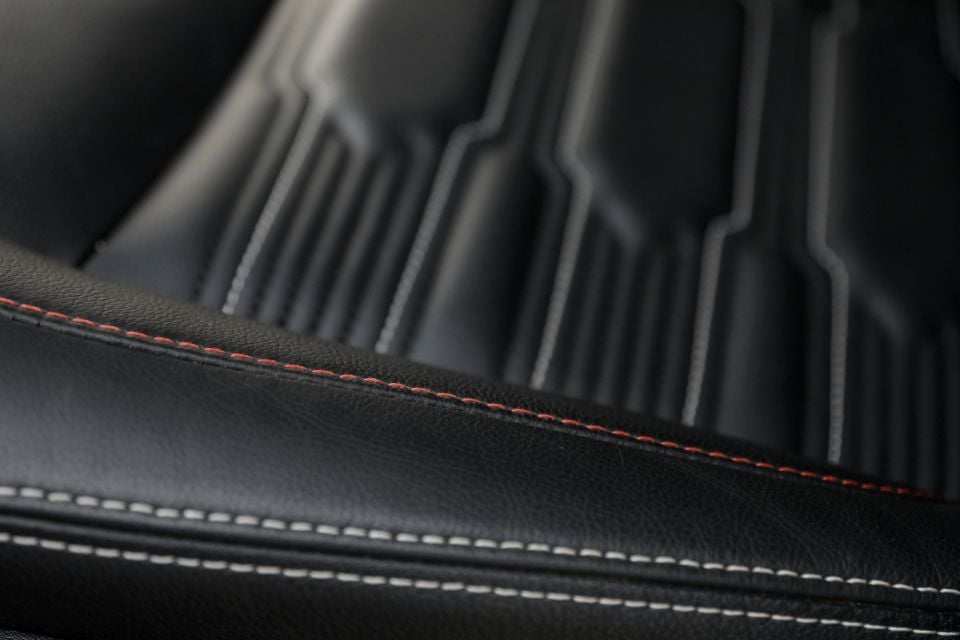
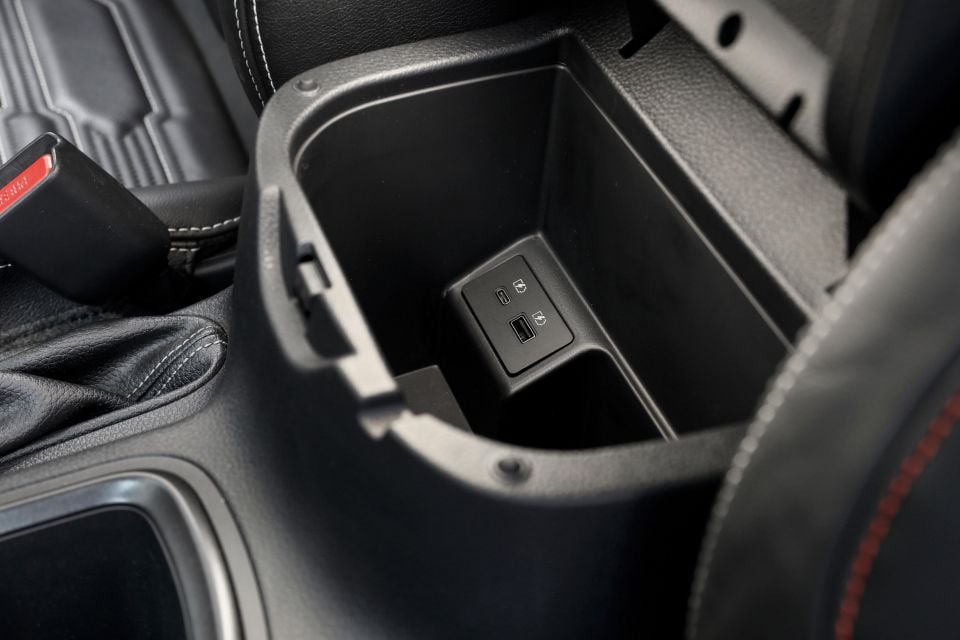
Inside there are plenty of premium items such as:
One minor gripe is the fact you can option electric heated seats and a sunroof on the ST-X grade but not in the PRO-4X. Perhaps the fact that a sunroof adds 11kg to the weight and would subsequently put the PRO-4X’s 1004kg payload below the magic one-tonne mark might be the explanation.
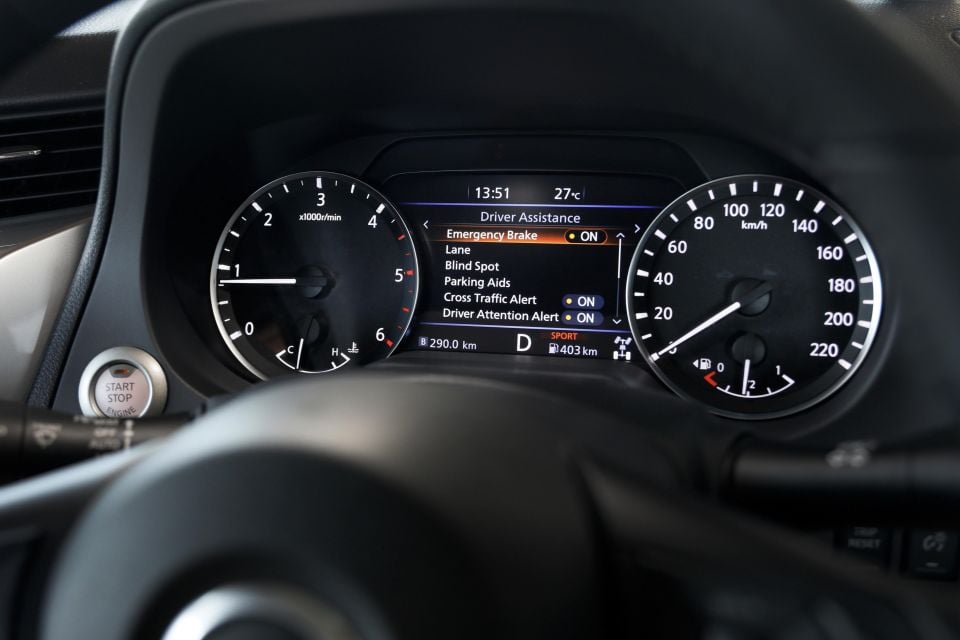
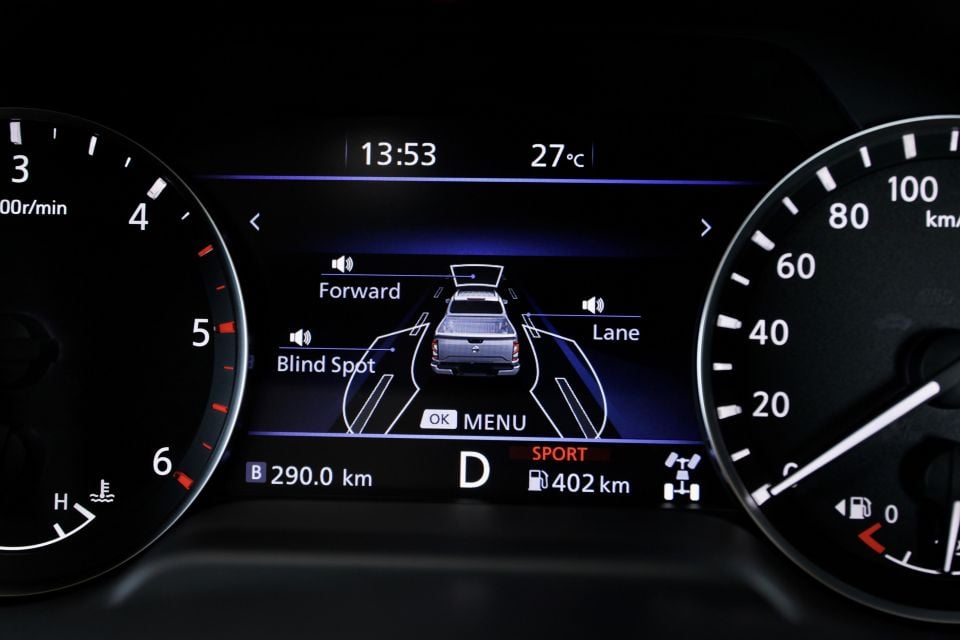
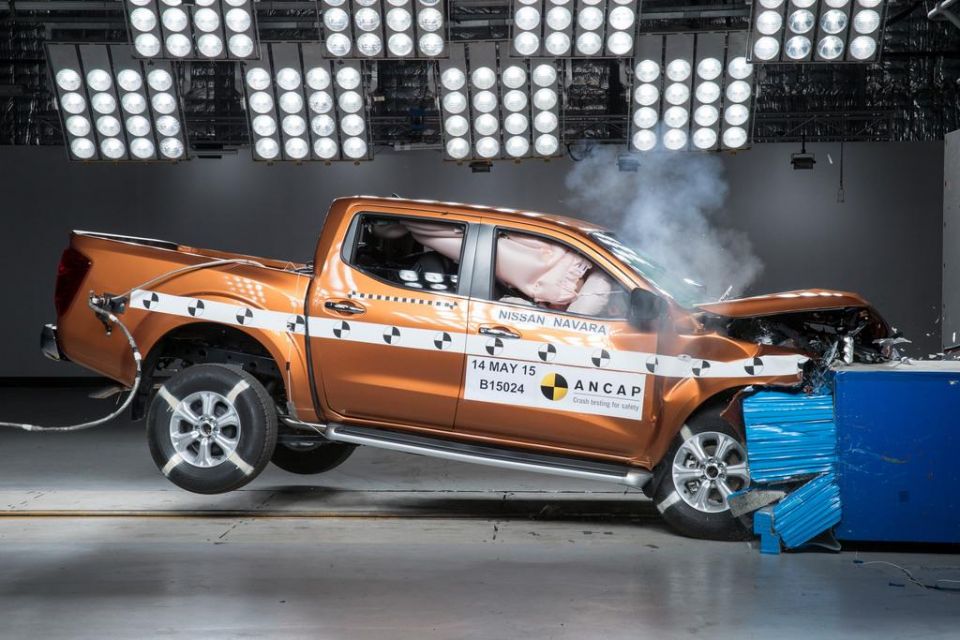
The Navara retains a five-star ANCAP crash rating. This is based on a 2015 test under older criteria.
Passive safety is handled by seven airbags (dual front, dual-front-side, full curtains, driver’s knee) and rear child-seat attachment points.
Active safety is much improved for 2021:
Features missing include a more contemporary steering-controlled lane-keeping aid, and active radar-guided cruise control. The cruise control is a passive system instead.
The general safety tech is much improved, but I suspect the AEB and FCW system needs a tweak: on three separate occasions the car’s brakes briefly engaged for no immediately obvious reason. Not full emergency stops, but unnecessary brake-tapping is never ideal.
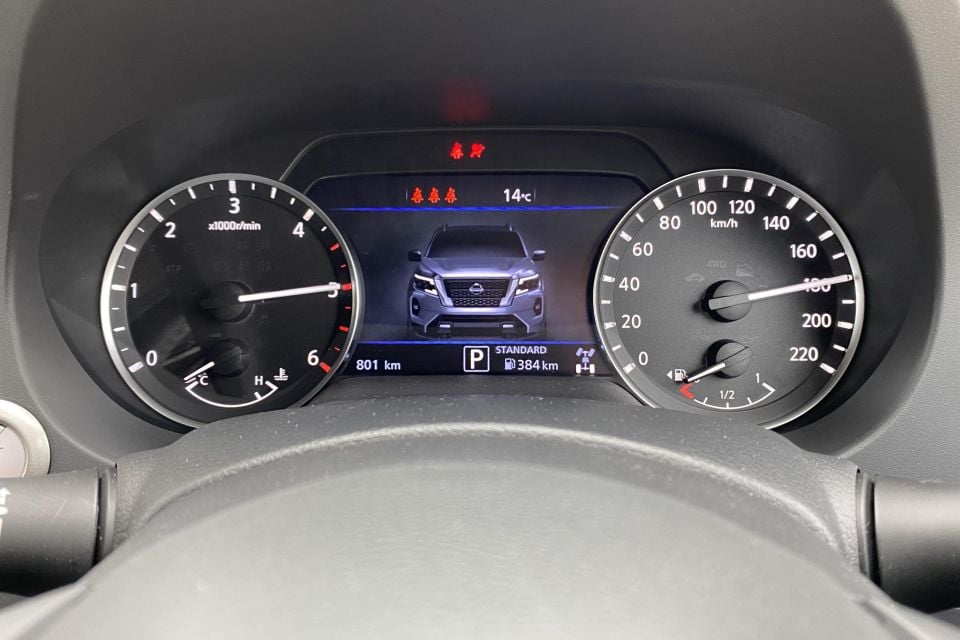

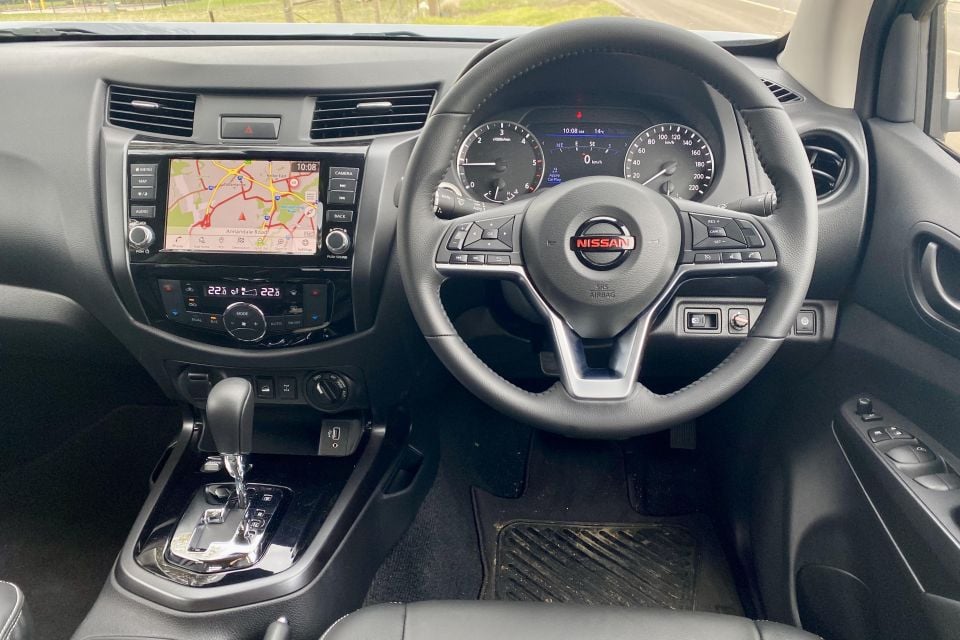
The cabin is largely familiar to anyone who’s sat in this generation of Navara, though the newly updated steering wheel is a far better design than the old car’s, where the horn was too close to the rim.
There’s still no telescopic adjustment for the steering column however, which is an irritant for anyone with unusual body proportions (like me!).
The seats are nicely stitched and feel hard-wearing, though they feel quite flat and unsupportive. All adjustments are manual and there’s no base heating.
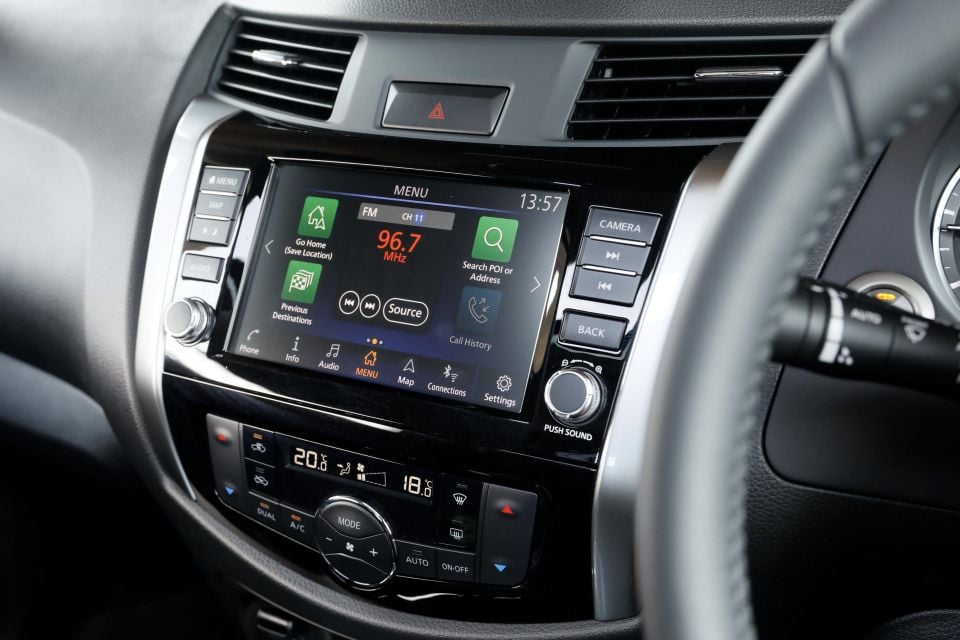
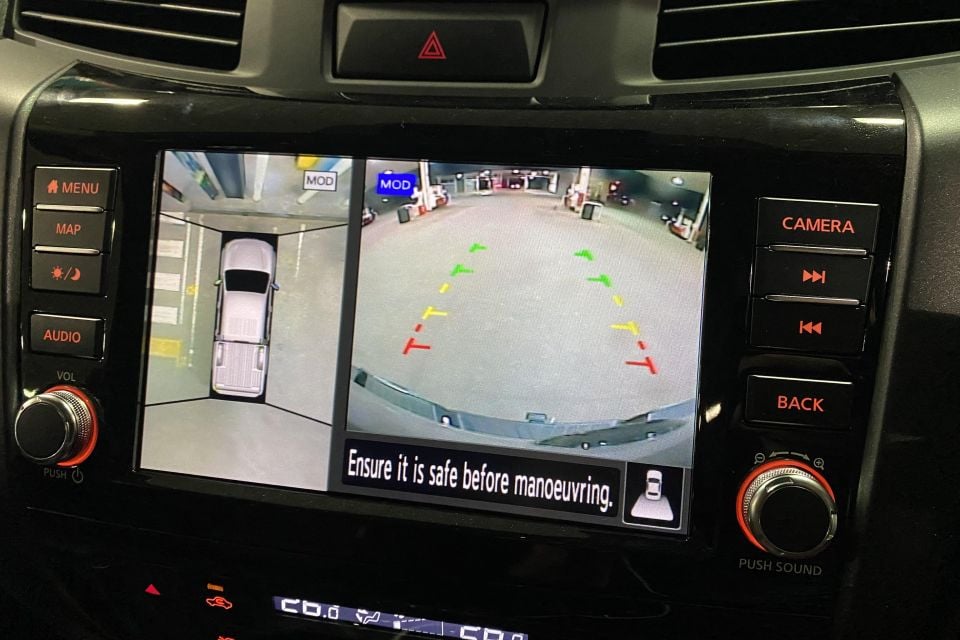
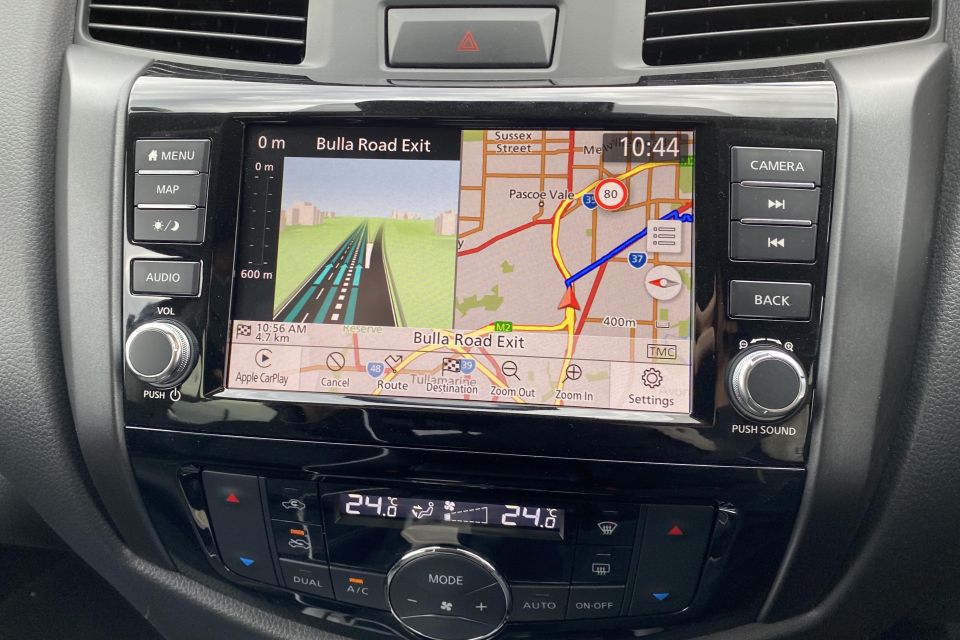
The large digitised trip computer is slick, and has a cool startup animation showing the car’s grille in all its newfound macho glory. It’s also simple to cycle through trip data, active safety functions, detailed direction signals when you’re using the navigation, and audio functions via the steering wheel buttons.
The centre touchscreen has a good sat-nav system that can be controlled from the screen or via the quite effective native voice control system. If you prefer you can use phone mirroring. The overhead view camera doesn’t have the crispest resolution but it’s still a worthy feature in such a large vehicle that makes tight parking easier.
Connectivity-wise you have Bluetooth or the choice of three regular USB points and a single USB-C. I had no complaints around the clarity of my voice on phone calls. There are also 12V outlets in the fascia and in the centre console, but no 230V inverter like a Ford Ranger has.
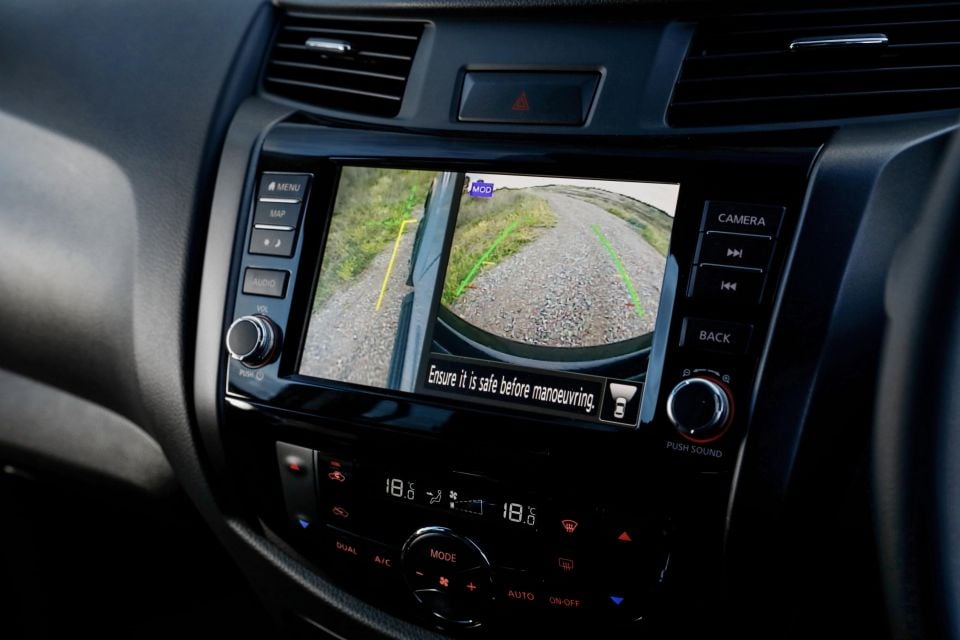
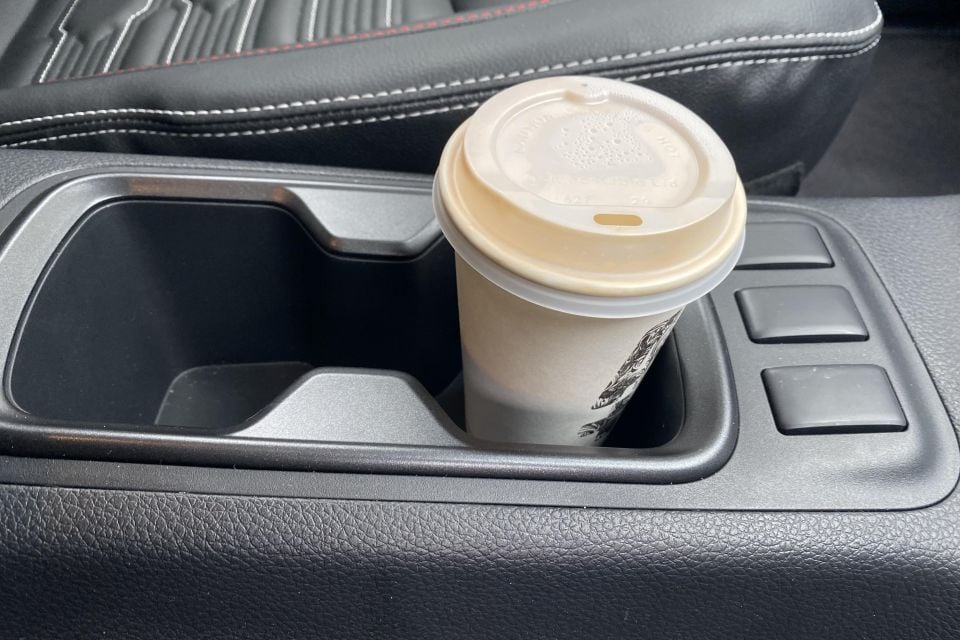
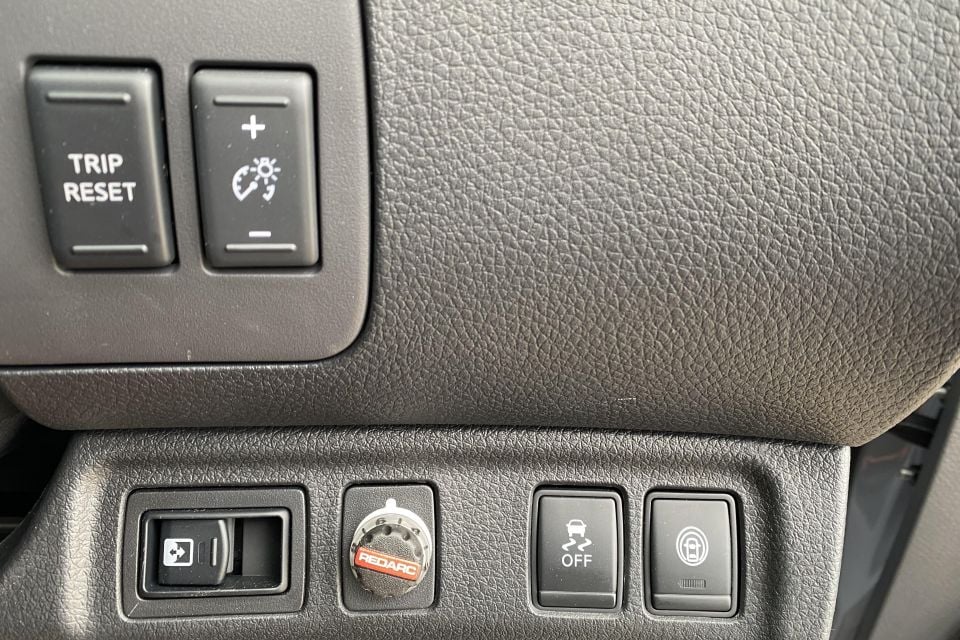
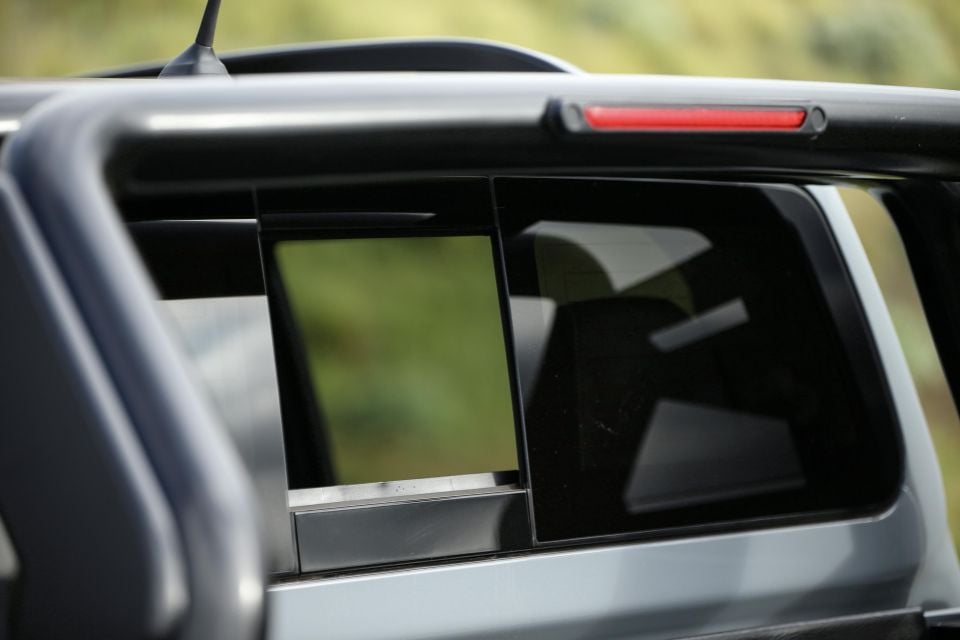
The dual-zone climate control system is all operated by buttons so it’s quite user-friendly, ditto the simple switch to control your 4×4 modes, rear locking diff, parking sensors, and hill-descent control.
It’s all really solidly built, with no squeaking or rattling trims, and a properly bolted-in centre tunnel. The dash is covered in hard trims which are easy to clean, while touch points like the door armrests and centre console lid are squishy and cushioned.
There’s a shortage of storage up front, with just the one glovebox (HiLux and D-Max have two stacked atop each other), no dashtop storage, a small console, a shallow open cubby below the ventilation controls that’s frustratingly smaller than a phone, modest door bins (1L bottle friendly), and a sunglasses cubby.
Nissan has bafflingly removed the nifty pull-out cupholders that were mounted under the outboard front vents in older models.
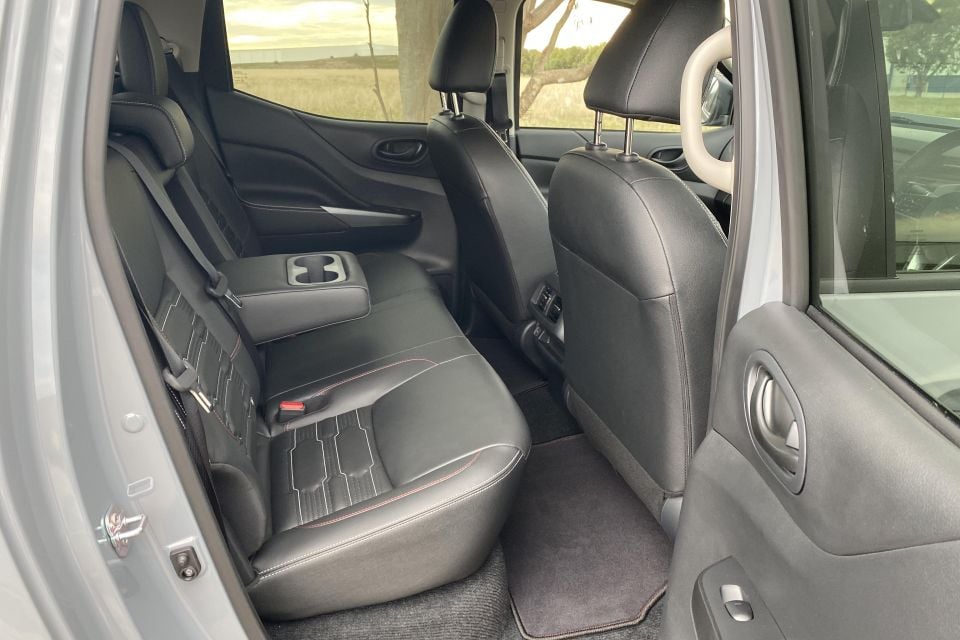
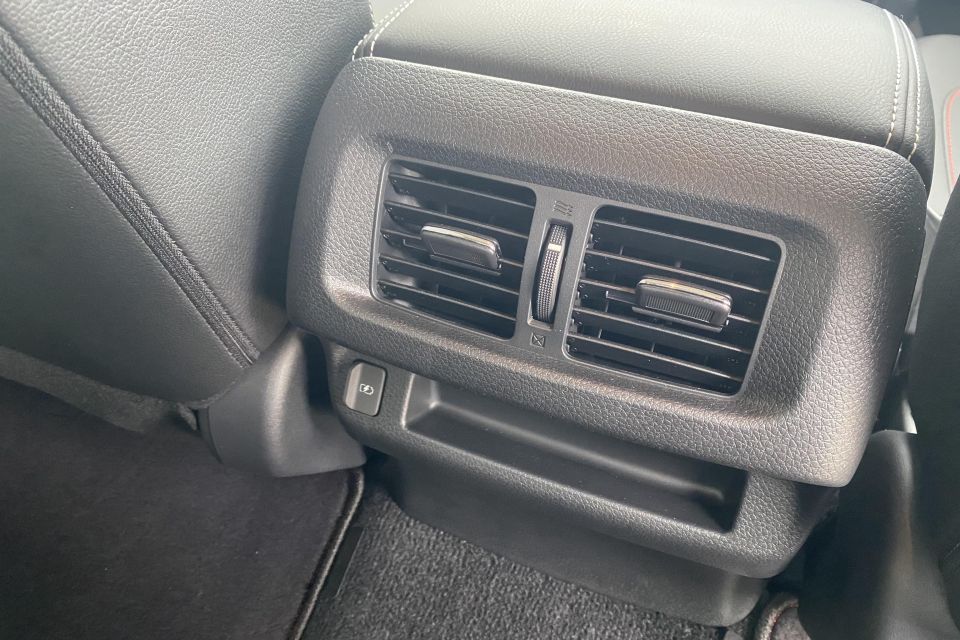
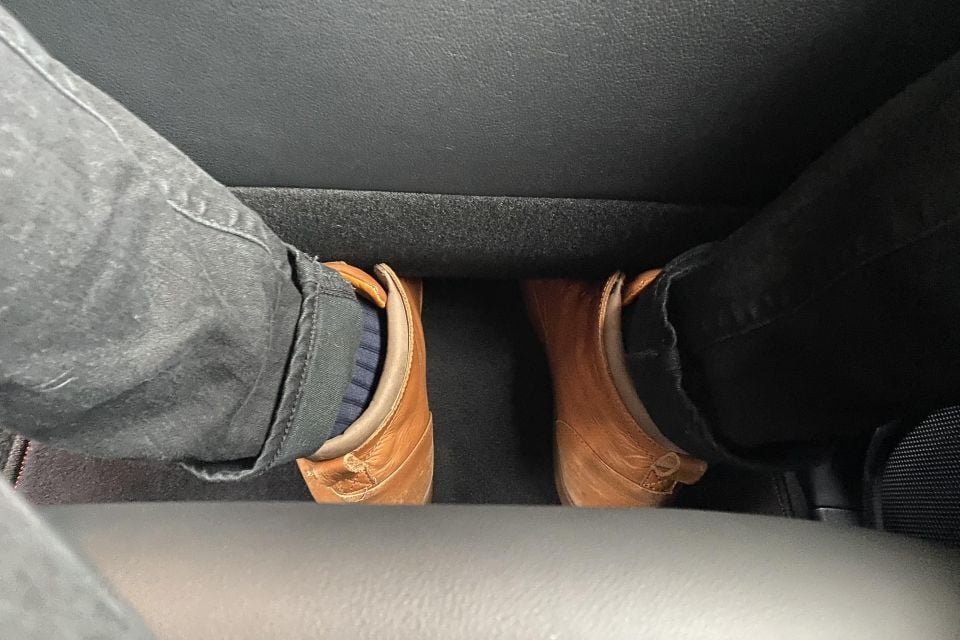
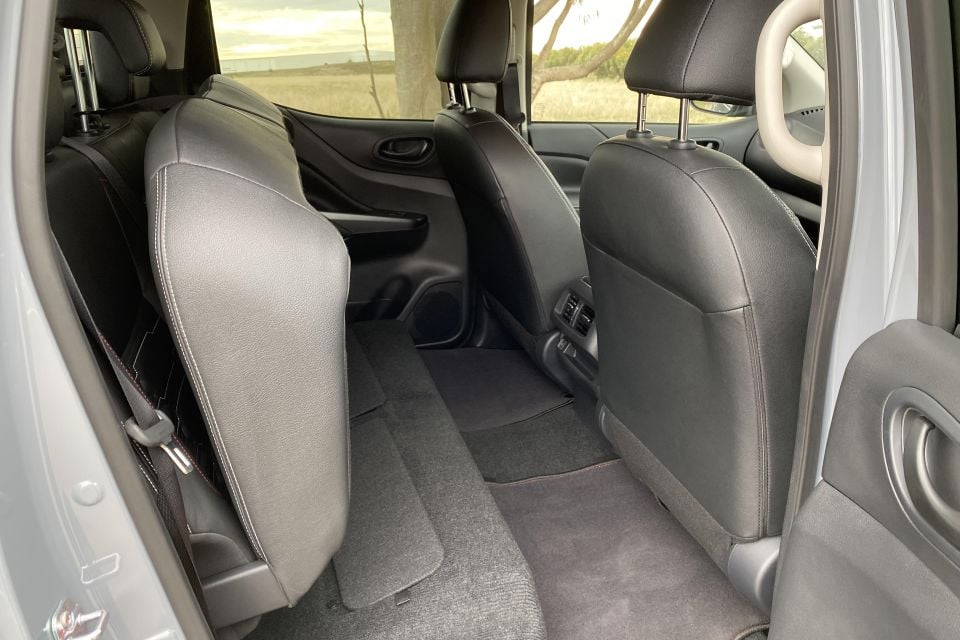
The Navara has never had the most roomy back seats in the caper, though I’m 194cm and 105kg and can fit behind my own ideal seating position if need be.
Headroom and knee room is borderline for me but for most people will do the trick. A couple of kids or teenagers on family road trips should feel right at home.
Amenities back there include solid grab handles on the B-pillar, a folding armrest with cupholders, rear air vents (not all competitors have these), and a single USB point. Rear occupants also have side head-protecting airbags and a combination of ISOFIX anchors and a single top-tether loop.
The back-seat bases flip upwards and tether to the headrest, with two small storage cubbies below. This whole area is handy for when you wish to stow things in the cabin rather than the tub for greater security.
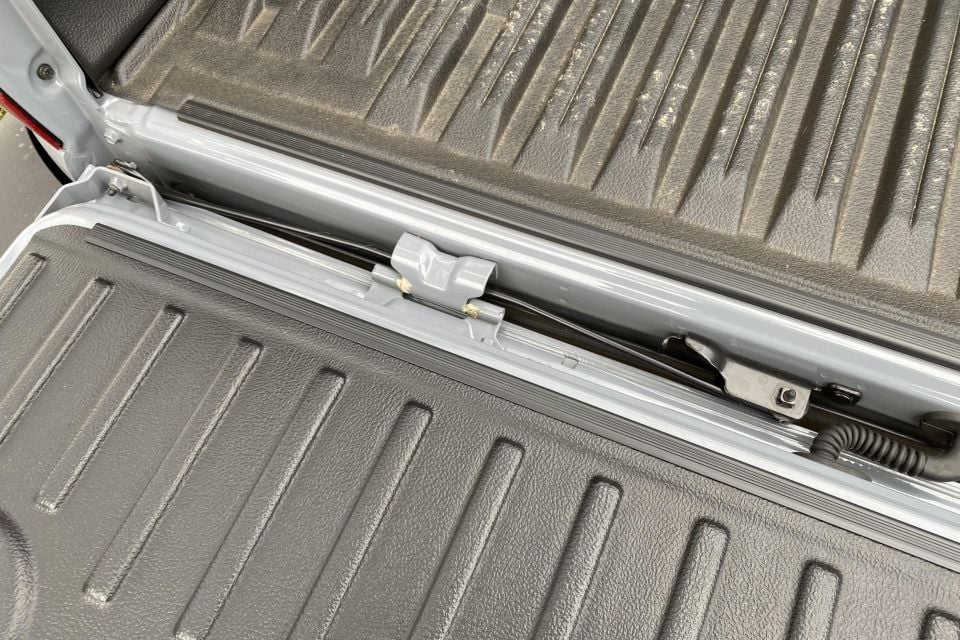

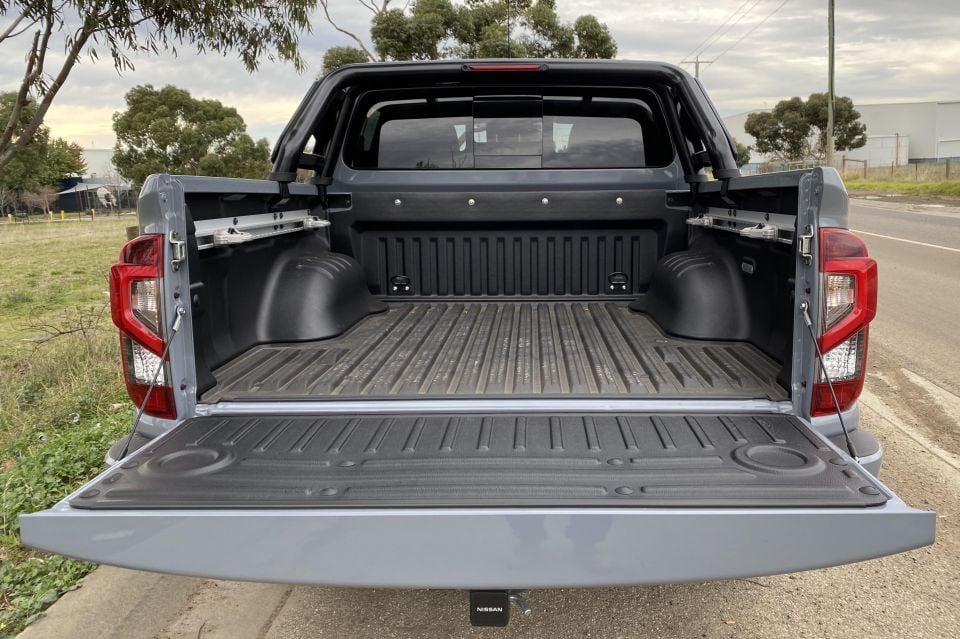
The manual tailgate assistance means it can be raised with a single finger if need be.
The tub comes with what feels to be a high quality plastic liner that is solidly screwed in and sealed off, plus four D-rings and those aforementioned Utili-Track movable tie-down anchors. The sliding back window completes the deal.
The lack of a 12V outlet in the tray could ideally be addressed in the next model, however.
MORE: Dual-cab ute tub dimensions compared
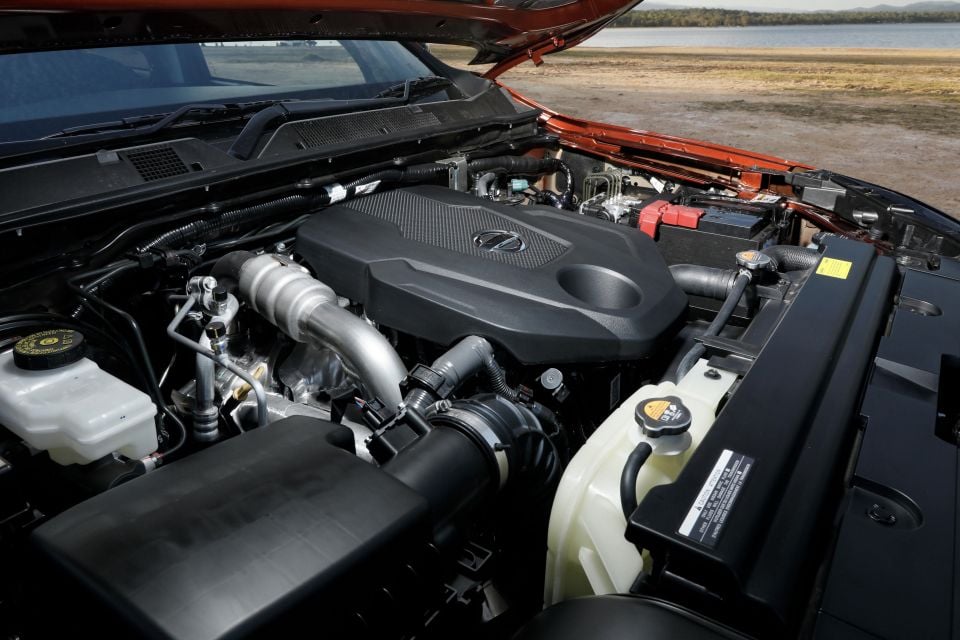
A familiar 2.3-litre diesel four-cylinder with two turbos, one for low engine speeds and one for higher.
Outputs are 140kW of power at 3750rpm and 450Nm of torque between 1500 and 2500rpm. I snuck under 10 seconds on my 0-100km/h run. Claimed combined-cycle fuel use is 8.1L/100km, and the tank stores 80 litres.
The Navara’s outputs therefore eclipse the 133kW/430Nm 2.4-litre Triton, and equal the 140kW/450Nm 3.0-litre D-Max and BT-50. But the 150kW and 500Nm 2.8-litre HiLux and 157kW and 500Nm 2.0-litre Ranger better it.
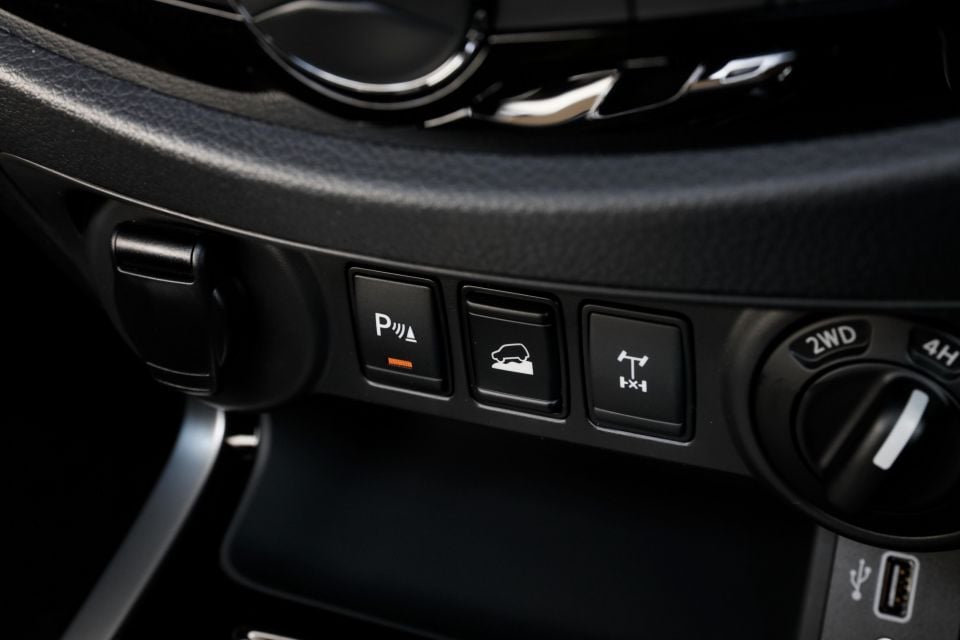
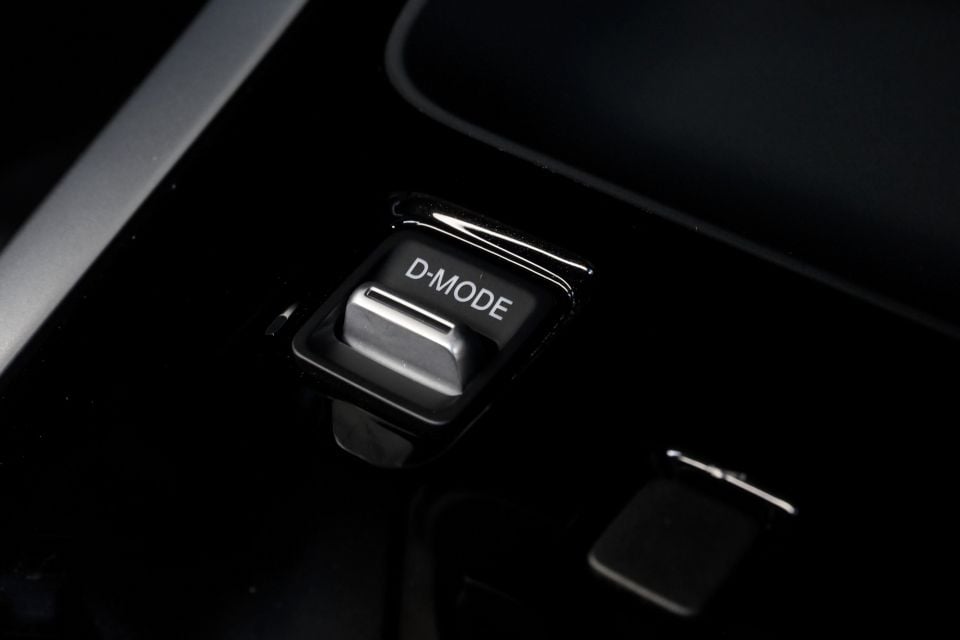
Nevertheless Nissan still claims an equal-class-leading 3.5-tonne braked-trailer towing capacity. The PRO-4X comes standard with a Nissan accessory tow bar and ball. Trailer-sway control is built into the ESC module.
However, the GVM in dual cabs is 3150kg and the GCM 5910kg, meaning you can ‘only’ tow 2760kg when at peak payload.
The 4×4 system is part-time, defaulting to rear-drive but capable of switching on-the-fly into high-range (for slippery gravel or snow) or low-range (proper off-roading) reduction gearing. There’s also a locking rear diff and hill-descent control.
Want to see our off-road Navara review? Here it is…

Where expert car reviews meet expert car buying – CarExpert gives you trusted advice, personalised service and real savings on your next new car.
The engine is familiar, and remains a solid if not spectacular offering. It’s generally quite refined until you’re really hard on throttle, and the seven-speed automatic transmission has a tall final ratio for highway use so you should see 1600rpm at 100km/h. It’s intuitive for the most part.
If you feed in too much power on take-off you’ll chirp the rear tyres, so better to be more progressive on the throttle. I only towed 1.1 tonnes and barely felt it. I also achieved fuel use of 9.1L/100km in a mixed urban and highway route, which is quite good since many rivals run into the 10s in the real world.
There’s a new rocker switch mounted next to the gear stick with the automatic transmission that gives you various driving modes that change the shift points to suit off-roading or towing. They don’t radically alter the vehicle by any means.
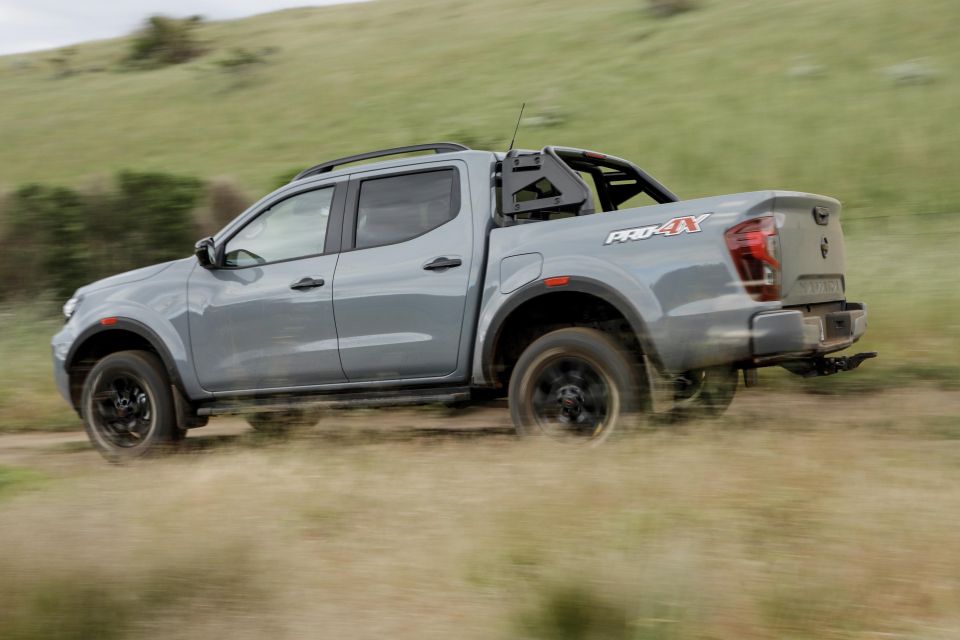
Nissan has fitted 25mm larger rear drum brakes than before alongside carryover front discs (some rivals have moved to rear discs now, but not the top-sellers) and claims to have strengthened the rear axle.
The 1004kg payload is most welcome. Not all of these heavy flagship dual-cabs can carry a tonne: a D-Max maxes out at 970kg, a Ranger Wildtrak 954kg, and a HiLux SR5 995kg. Not a huge difference admittedly.
Under the tub sits unusual-for-the-class five-link rear suspension with dual-rate coil springs that control the ride when laden without messing with the unladen road feel, instead of load-lugging leaf springs. This is alongside double wishbone setups at the front.
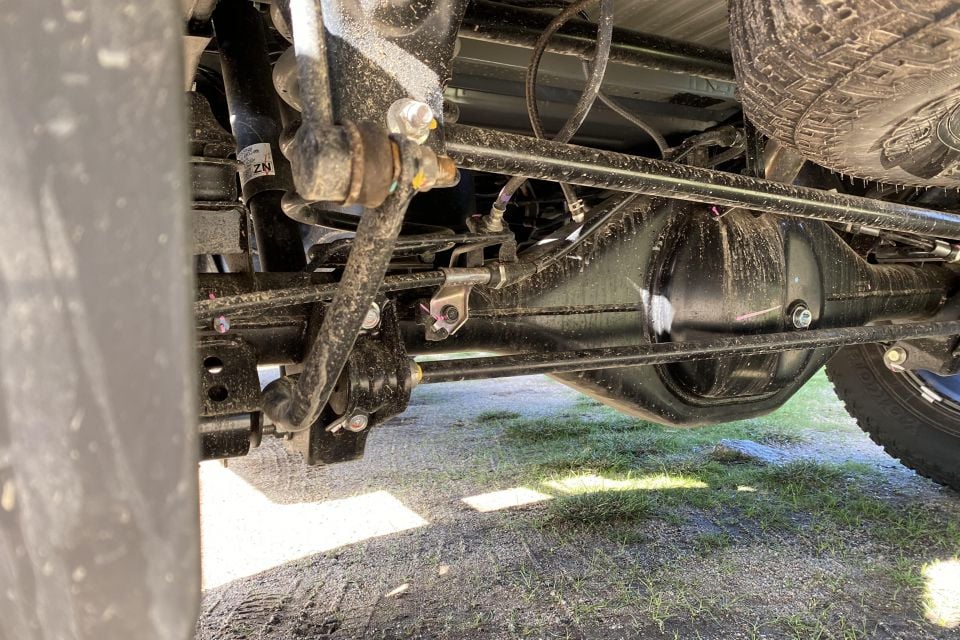
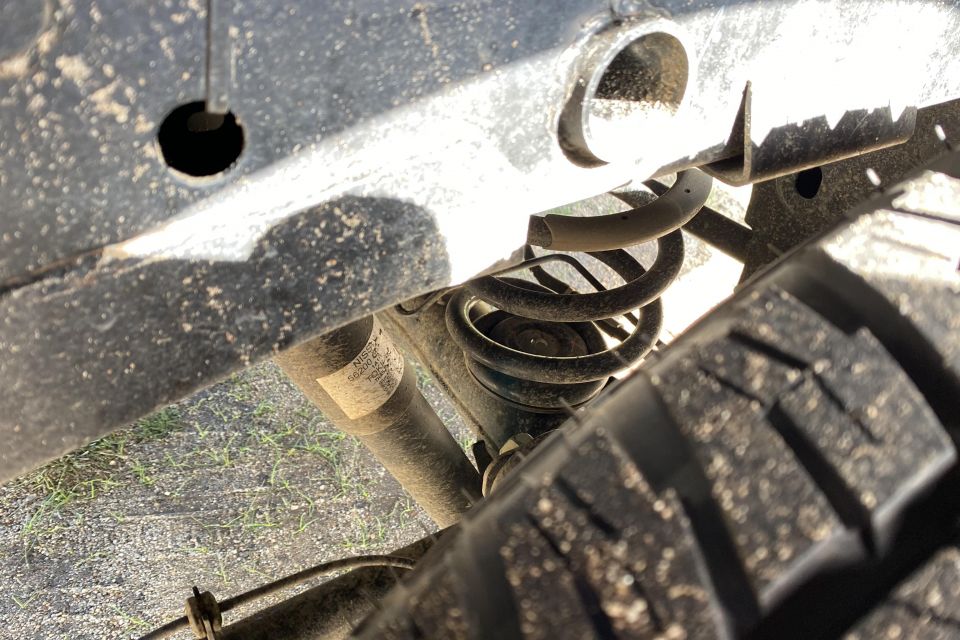
This means the Navara is quite supple over road bumps when unladen, and doesn’t jiggle or bounce around at the rear sans load. The extra few mm of tyre sidewall in the PRO-4X further isolate you from repeated low-amplitude cobbles and corrugations, especially next to a Triton which rarely feels settled.
While early D23 iterations felt unwieldy and sagged under load, this new one stays level with 700kg in the tub and offers SUV-like body control more often than not.
That said, I don’t think it’s really any cushier than the well-tuned Ranger, HiLux or D-Max, but perhaps it does settle s little quicker after undulations. The hydraulic-assisted steering also has reassuring heft without being overly weighty or slow.
Claimed NVH-suppressing insulation additions work well too. I recorded noise levels of 68dB over a familiar strip of B-road at 100km/h. Over this same stretch I’ve recorded 70dB in a BT-50 and Ranger, though to be scientific about it I’d need to do all three on the same day in identical weather.

Nissan provides a five-year, unlimited-kilometre warranty.
Service prices are capped for the first six visits, at $502, $539, $703, $560, $543, and $775 (for the autos, all manuals are a couple of bucks more per visit).
While each visit looks expensive, you must consider the longer-than-average 12-month or 20,000km intervals. Most rivals need to be serviced at 12 months/15,000km, and the HiLux every six-months/10,000km.
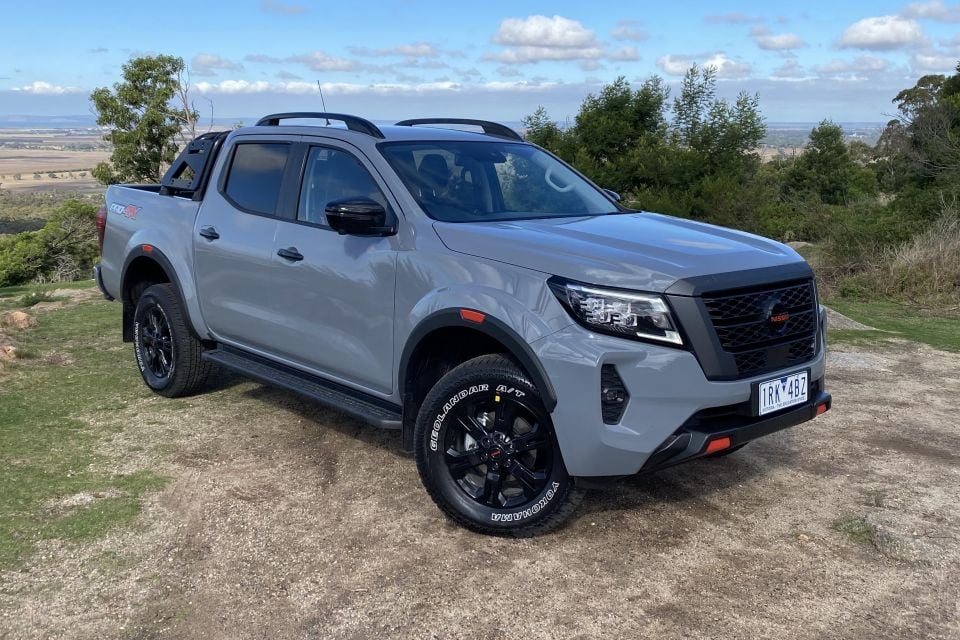
With a series of improvements over the past few years, focused on addressing payload, infotainment, steering weight, active safety, and ergonomic issues, Nissan has made the D23 Navara the sort of comfy and stylish ute it always ought to have been.
Moreover, the PRO-4X looks great to my eyes, making it a pretty impressive lifestyle ute. In terms of refinement, efficiency, build quality, tech, and design it’s now a strong – if not outright class-topping – contender.
Would I buy one over a D-Max X-Terrain? Not quite – to be honest, but I’d certainly understand it if you had your eye on one. Its body kit is definitely more convincing than the Isuzu’s…
I can say comfortably that it’s absolutely the best iteration of the D23 Navara to date, and makes us wonder what the imminent Warrior version has in store.

Click the images for the full gallery
Where expert car reviews meet expert car buying – CarExpert gives you trusted advice, personalised service and real savings on your next new car.


Ben Zachariah
2 Days Ago


Matt Campbell
2 Days Ago


Derek Fung
6 Days Ago


Damion Smy
9 Days Ago


Ben Zachariah
11 Days Ago


James Wong
16 Days Ago